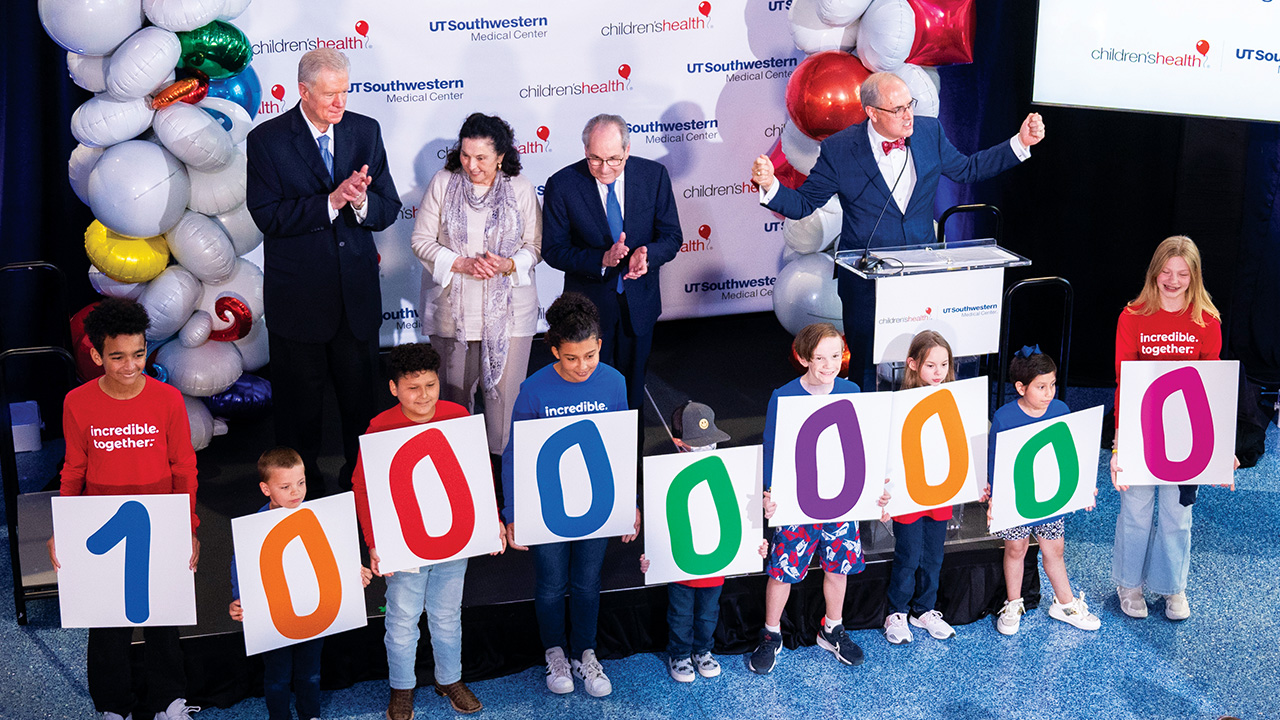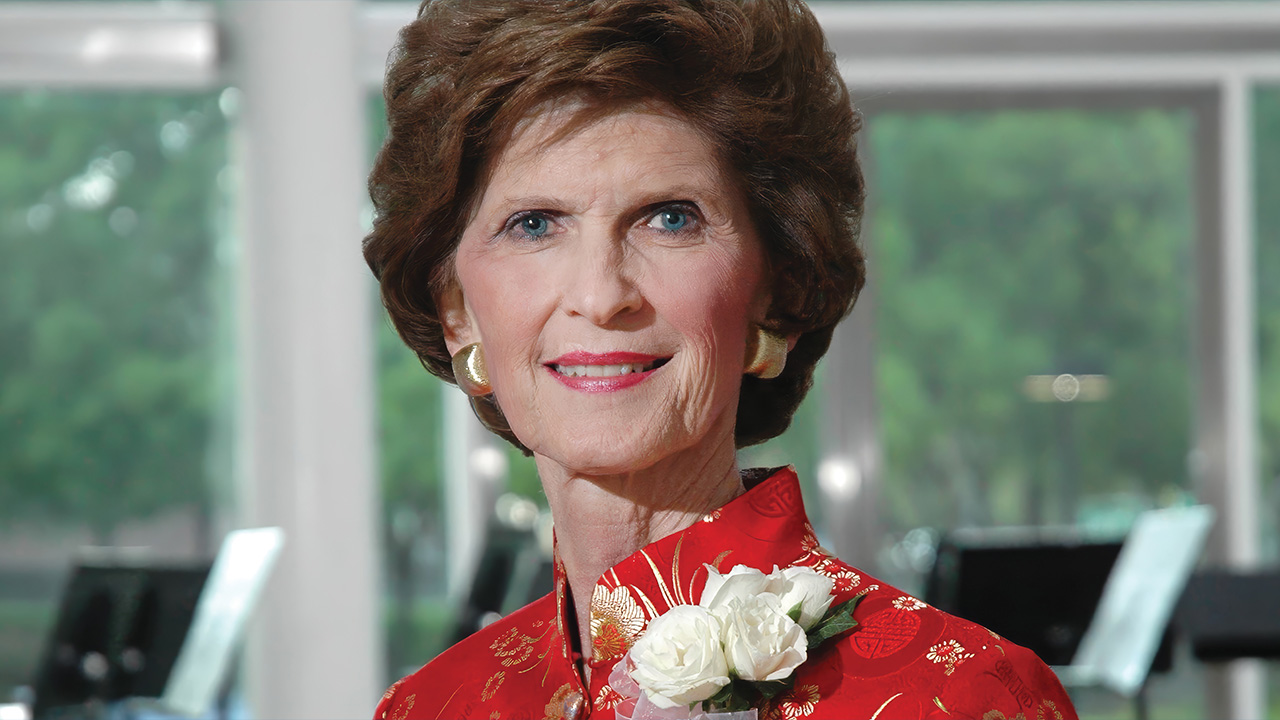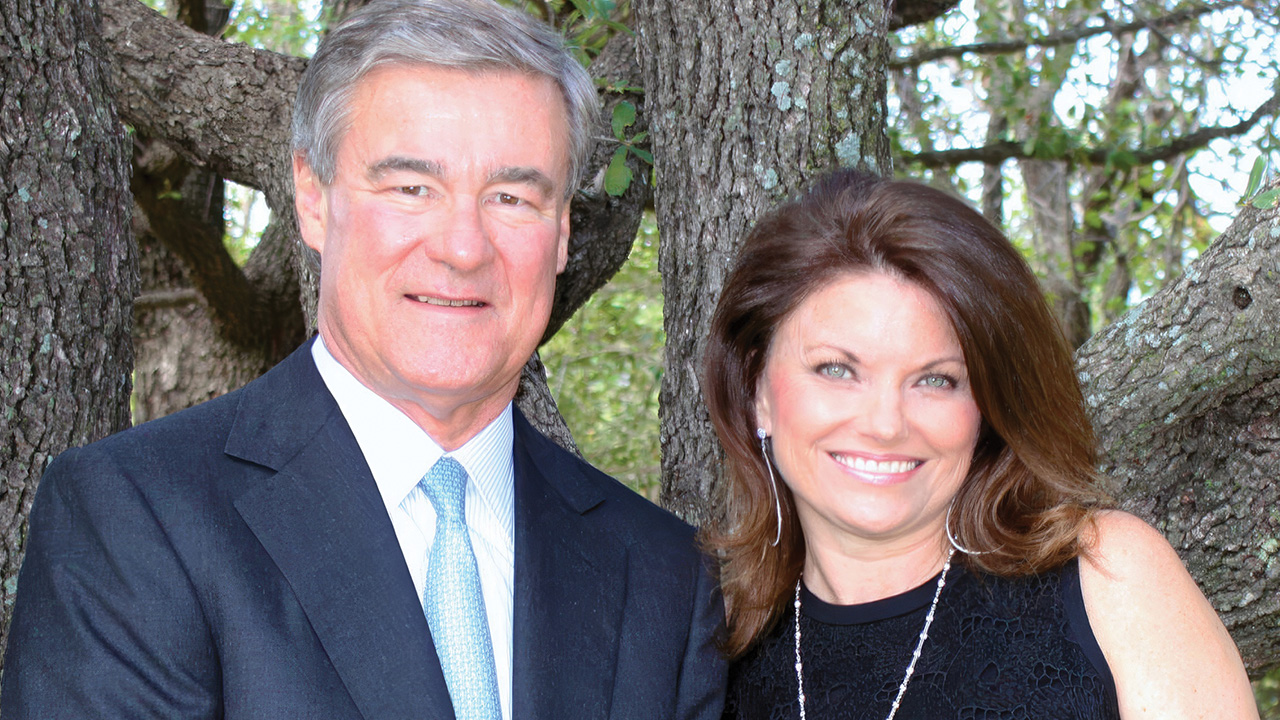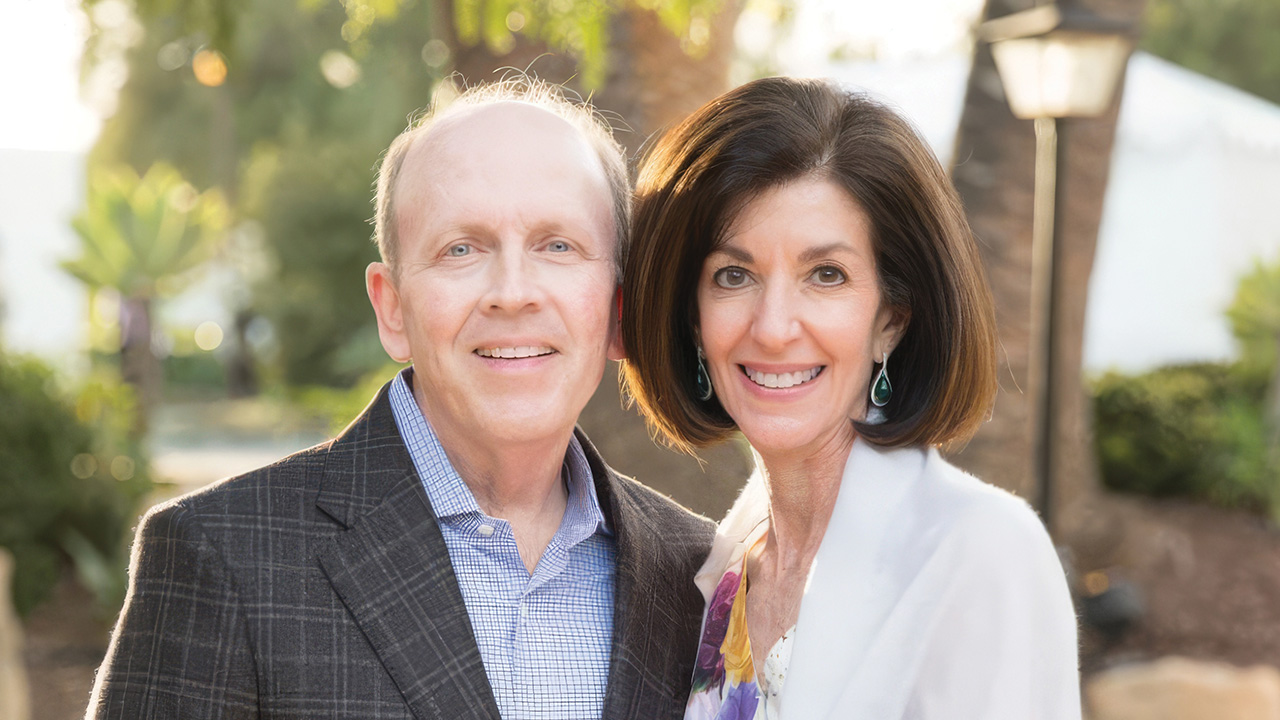On the north end of the Southwestern Medical District, beneath the steady hum of aircraft taking off from nearby Dallas Love Field, a transformative addition to the region’s health care landscape is beginning to take shape. Amid an army of backhoes and excavators, what’s rising on this 33-acre site represents a joint vision from Children’s Health™ and UT Southwestern – one that aims to address rapid population growth. By 2050, North Texas will be home to more than 5 million children – twice the number living in the area today.
With a region growing at the rate of one resident every three minutes, demand for high-quality pediatric care is surging. For civic leaders, health care administrators, and the families who face the challenges of serious pediatric illness, this growth signals that the future of the region’s children is inseparably tied to its economic health.
To meet this escalating need, Children’s Health and UT Southwestern have broken ground on a $5 billion project that will create a cutting-edge pediatric health campus. This expansive facility will replace the existing Children’s Medical Center Dallas, ushering in a new era of pediatric care.

THE POGUE FOUNDATION
Mack and I have had the blessing of being able to support Children’s Health and UT Southwestern for many years, knowing how much they impact the well-being of patients and communities they serve. Our family is proud to play a part in helping build the new Dallas pediatric
campus. We’re beyond grateful for the difference it will make for future generations of children.
– Jean Pogue
The new campus will encompass more than 4.5 million square feet, with its centerpiece a pediatric hospital featuring two 12-story towers and one eight-story tower. The hospital will stand amid sprawling green spaces designed to promote healing while expanding inpatient, surgical, and outpatient care for children in one of the nation’s fastest growing and largest metropolitan areas.
“This is not a project of choice, but a project of necessity,” Daniel K. Podolsky, M.D., President of UT Southwestern, said at the October groundbreaking event, where attendees included Dallas sports icons Troy Aikman and Dirk Nowitzki. “In fact, this is the opposite of a vanity project. This is about us stepping up for what the community of North Texas, and beyond, needs for our children.”
The current Children’s Medical Center Dallas, opened in 1967, faces near-daily capacity constraints. The new pediatric hospital will feature 552 beds – a 38% increase from the current facility – with additional space set aside for future expansion. It will also house the region’s only Level I pediatric trauma center, equipped with 90 emergency department exam rooms, 24 observation rooms, and a two-story surgical suite that includes 20 operating rooms, cardiac catheterization labs, and interventional radiology suites. An ambulatory care building next door will allow physicians and support services to seamlessly support both inpatient and outpatient care.
The facility will be larger than AT&T Stadium, as long as six 737 passenger jets parked nose to tail, and will stand taller than the Statue of Liberty. But instead of symbolically welcoming new arrivals to New York Harbor, it will overlook Love Field to the east, where patients from across the country will arrive to receive the unparalleled care that only Children’s Health and UT Southwestern can deliver.
Bridging innovation and care
The new pediatric hospital is designed to deliver state-of-the-art care that incorporates the latest clinical innovations – from gene therapy to treatments for congenital heart disease, cancer, rare diseases, and more. The direct integration of research into clinical care is a hallmark of the design, ensuring that each child’s care is continuously informed by the latest discoveries from UT Southwestern’s labs and clinical trials.

MRS. SANDRA ESTESS
There is nothing like the generosity and the philanthropic intent of people in Dallas...While the need is great, so must be the effort to meet the need.
“We have the ability to drive personalized care for children through two exceptional environments, one with a tradition of pursuing excellence through discovering the causes of disease and the other with an exceptional environment of team-based care leading to clinical innovation,” said Jorge Bezerra, M.D., Chair of Pediatrics at UT Southwestern and Pediatrician-in Chief at Children’s Medical Center Dallas. “The bottom line is that when these two approaches come together, the future for children in Texas and beyond is bright.”
The facility also will have a physical connection to UT Southwestern’s William P. Clements Jr. University Hospital, creating a direct link to maternal and child services, as well as the necessary adult care required for lifelong conditions. Opened in 2014, Clements University Hospital operates a joint neonatal intensive care unit (NICU) with Children’s Health, offering support for critical-care newborns. This proximity will ensure pediatric expertise is instantly accessible for newborns who need highly specialized care.
Pediatric Hospital Fun Facts
Beyond the blueprint
The design of the hospital reflects a forward-thinking approach to health care – one that considers the patient experience now but keeps future technologies in mind.
“We are really building a hospital in the context of the patient and family, surrounded by the staff, so it’s very much a healing environment for the family. The design facilitates absolute care and comfort of the child, and the fact is that both parents can stay with the child, if needed,” said Maeve Sheehan, M.D., Associate Vice President of the Pediatric Group Practice, and Physician Executive for the New Pediatric Campus at UT Southwestern.
In addition, many areas, rooms, and spaces have been designed for flexibility to allow for future technology upgrades without building layout constraints.

THE REES-JONES FOUNDATION
We are grateful for our longstanding relationship with Children’s Health and UT Southwestern, two organizations that align with our mission to provide opportunities for the disadvantaged, relief for suffering, and encouragement in the growth and well-being of children and families. Our family and foundation are proud to offer support to help build the new Dallas pediatric campus, a facility that will change lives both in our community and around the world.
“Operating rooms are already changing to incorporate more technologies, and we want to be ready for that,” said Becky McCulley, RN, M.S.N., Vice President of Clinical Programming and Facility Development at UT Southwestern. “If the pandemic taught us anything, it’s that hyperfiltration systems must be robust, so we are designing with cleaner, fresher air in mind to reduce respiratory risks.”
Architectural firms HKS and Perkins&Will have partnered on the design, which will make the new pediatric hospital the largest pediatric facility ever built from the ground up in the U.S. “Unlike other large pediatric hospitals that have expanded over time, this Dallas facility will be designed from the outset to accommodate future growth and technological advancements,” says Rachel Knox, HKS’ Pediatric Studio Practice Leader and a principal-in-charge on the project.
“We’re creating a building for technologies and treatments that haven’t been invented yet,” said Ian Sinnett, Southwest Region Health Practice Leader at Perkins&Will. “So, creating that framework, to be able to accommodate needs we can’t fully anticipate yet, is extremely important for us.”
Competitive edge
Some view the construction of the new campus as a bet on making North Texas the best metropolitan area in the nation for children’s health – as well as a destination for employers seeking to offer workers the finest care for their families.
David W. Biegler, Chair of the Southwestern Medical District, is optimistic that the new facility will ensure that Dallas remains an attractive destination for businesses and families. The 1,000-plus-acre District interconnects medical providers, researchers, and scholars and includes UT Southwestern, Children’s Health, and Parkland Memorial Hospital.

CATHY AND CRAIG GLICK
We are honored to be a part of this partnership between UT Southwestern and Children’s Health, which will increase inpatient beds, operating rooms, exam rooms, and outpatient treatment. This world-class project will also help to continue to attract the best medical personnel to the Medical Center. We’re so fortunate to have UT Southwestern and Children’s Health serving the needs of our growing community.
His take on Dallas competing on the world stage comes down to having a superior education-to-workforce pipeline, and a health care infrastructure that is second to none.
“You can’t be an economic powerhouse within this country, you can’t be a destination where people want to live, you can’t be a corporate relocation center to the degree that we’ve enjoyed recently unless you have nationally ranked and respected health care,” Mr. Biegler said. “And there is nothing more emotional for people when they are deciding to move and asking, ‘Is my child going to have good health care?’ If you can’t cross that threshold, then you don’t even get to compete in the game. You can’t be the city you aspire to be unless you take care of each and every child in the city. And that takes a commitment from the whole community, including leaders at Children’s and UT Southwestern.”
According to recent data published in The Journal of Pediatrics, there is a nationwide shortage of pediatricians to staff children’s hospitals, which account for one out of every 20 hospitals in the United States. A 2020 report by the Texas Health and Human Services Commission identified North Texas as one of the areas with the greatest shortage of pediatricians.
In building the new hospital, UT Southwestern is taking a national leadership role in solving issues that ultimately stem from a lack of early exposure to pediatrics in medical education.
“Students having their first exposure to pediatric medicine in the new hospital will have a formative experience,” Dr. Bezerra said. “Earlier experiences often help students understand and develop an interest for the discipline where they may want to work. Curricula and clinical time that is focused on providing the best care for children, in a collaborative and gleamingly new and spacious facility like we’ll have, will encourage students to specialize in caring for children, which is an intended consequence of the new campus.”
The Hogan Family
Healing hearts
Among the many children who will benefit from the new hospital is Easton Hogan. Born with a heart riddled with large holes, Easton underwent complex surgery under the care of Nicholas Andersen, M.D., Associate Professor in the Department of Cardiovascular and Thoracic Surgery at UT Southwestern. Utilizing a 3D-printed model of Easton’s heart, Dr. Andersen executed a groundbreaking surgery to save Easton’s life. Easton’s surgery involved constructing a new ventricle from a bovine membrane – a highly specialized procedure performed at only two pediatric centers in the U.S., one of them Children’s Medical Center.
Nicholas Andersen, M.D.
Today, Easton is thriving. He recently celebrated his first birthday, and parents Lauren and Peter Hogan are immensely grateful for the team at UT Southwestern and Children’s who gave their son a future.
“The team approach is what made Easton’s treatment a success,” Mrs. Hogan said. “It’s not a one-man show. Every doctor and every nurse had ideas, and you could see them challenge each other’s thinking in order to do what’s best for Easton.”
Designed with the same exquisite attention to detail and planning that went into reconstructing Easton’s heart, the new hospital will be ready in 2031 to treat thousands of kids and medical necessities to come.
“We know our story, or our ‘tree,’ really well in terms of what Easton went through, but there’s a forest of cardiac kiddos out there, all with different issues,” Mrs. Hogan said. “It was clear to us that UT Southwestern knows their stuff, and the job of these doctors is to know every tree in that forest. If so many people can come together to perfect the construction of something so delicate and small, think of the possibilities when thousands of bright minds come together to build a new hospital.”
Having all the experts in close proximity will be a distinguishing feature of the hospital, said Nicolas Madsen, M.D., Chief of the Division of Pediatric Cardiology and Co-Director of the Heart Center, and one of Easton’s doctors.
“The new hospital is organized around the total care of the patient, to bring the maximum number of experts and supportive care professionals into the same space so that when seconds matter, we have the ability to act collectively and decisively with all of the best minds at the table,” Dr. Madsen said.
Guardians of tomorrow
The minds that have come together to create the hospital have ensured it will be serving the region long after they are gone.
“Children are our most precious gift, for they are a view to a future that we will not see,” said Christopher Durovich, President and Chief Executive Officer of Children’s Health. “Our responsibility is to help them find their gifts so that they can fulfill their promise and their potential in the world, through a foundation of good health – one that the new hospital is destined to provide.”
Looking ahead to 2031, when the hospital is scheduled to open its doors, UT Southwestern and Children’s Health are preparing to meet the challenges of tomorrow with a facility designed to accommodate the next generation of breakthroughs in pediatric medicine. For families like the Hogans, this new hospital symbolizes not just hope, but the promise of a brighter future for every child who walks through its doors.
Project Champions
A special thank you to the members of our community who were the first to step forward and support this project, many of whom gave prior to project design and announcement, sight unseen.
- Dr. Bezerra holds the Robert L. Moore Chair in Pediatrics.
- Dr. Madsen holds the Pogue Family Distinguished Chair in Pediatric Cardiology.
- Dr. Podolsky holds the Philip O’Bryan Montgomery, Jr., M.D. Distinguished Presidential Chair in Academic Administration, and the Charles Cameron Sprague Distinguished Chair in Biomedical Science.